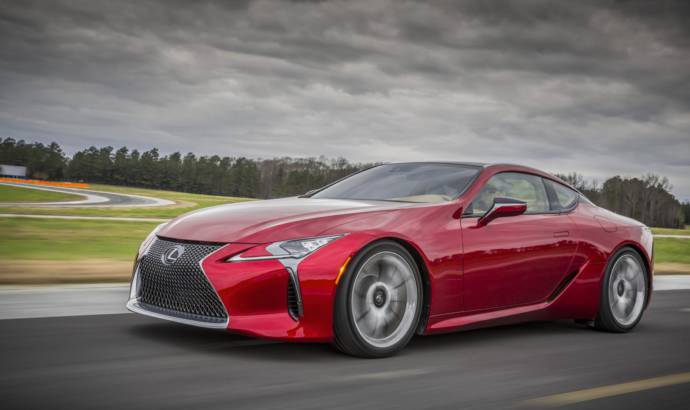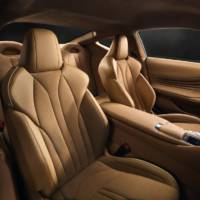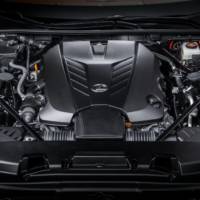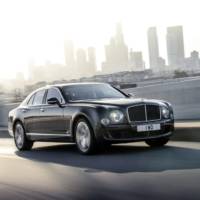When everyone saw the new Lexus LC500 supercar in Detroit, they thought is a concept. That`s how good loking is the car in production form. Facing a though competition from Mercedes AMG GT, the 2+2 coupe has evolved nicely from the LF-LC concept, introduced a four year ago.
The LC 500’s front fascia features a powerful interpretation of Lexus’ distinctive grille, bordered by chrome on three sides and a radical new 3D mesh design. The “L”-shaped daytime running lights rest below a new Triple LED headlamp unit, specially designed to include one of the industry’s thinnest projectors enabling a low hood with a short front overhang. Functional venting also plays into the LC 500’s exterior design to help improve aerodynamic stability and cooling.
A rear diffuser and available active rear spoiler help manage airflow during driving. It rides on machined cast aluminum 20 inch or available 21 inch forged aluminum wheels.
The LC 500 is the first Lexus to use the brand’s all-new, premium rear-wheel-drive luxury platform and is part of the new corporate global architecture for luxury vehicles (GA-L). The underpinnings of this new coupe will become the blueprint for the company’s future front-engine/rear-wheel-drive vehicles.
Mass management measures include the available carbon fiber roof, aluminum door skins mounted to the carbon fiber door inner structure, and a composite trunk floor. the LC 500 is very balanced with a nearly ideal front/rear weight distribution of 52/48.
The heart of the new LC500 is derived from the 5.0-liter V8 that is found in the RC F and GS F. The naturally aspirated V8 was selected for its smooth, linear throttle response and emotional engine sound. The all-aluminum, 32-valve V8’s output targets 467 HP and 389 lb.-ft. of torque.
Helping power transfer to the rear wheels is a newly developed 10-speed automatic transmission—the first ever in a luxury automobile—with shift times rivaling those of a dual-clutch transmission. The component is smaller and lighter than some current 8-speed transmissions. This way, the vehicle targets a 0 to 60 mph time of less than 4.5 seconds.








